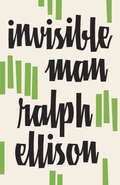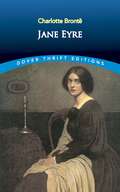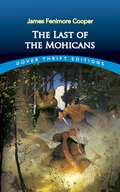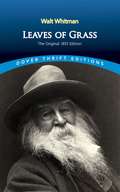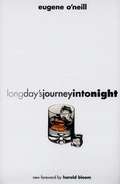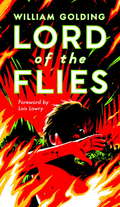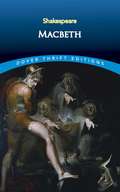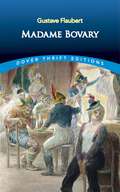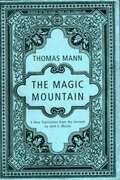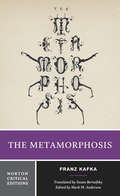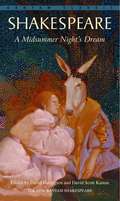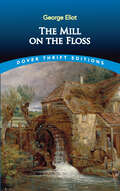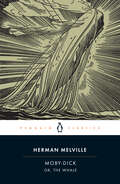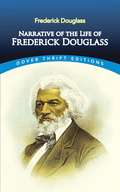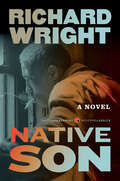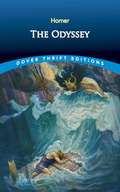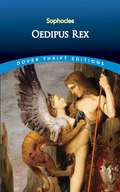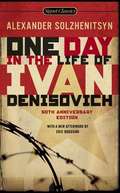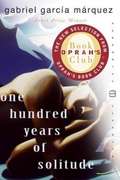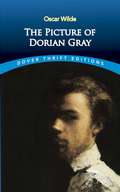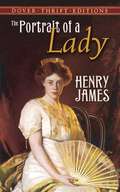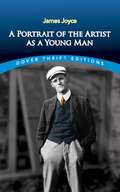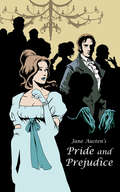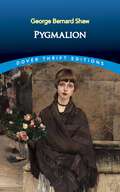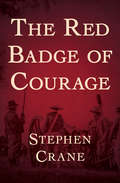Special Collections
College Board's 100 Books for College-Bound Readers
- Table View
- List View
Invisible Man
by Ralph EllisonInvisible Man is a milestone in American literature, a book that has continued to engage readers since its appearance in 1952.
The nameless narrator of the novel describes growing up in a black community in the South, attending a Negro college from which he is expelled, moving to New York and becoming the chief spokesman of the Harlem branch of "the Brotherhood", and retreating amid violence and confusion to the basement lair of the Invisible Man he imagines himself to be.
The book is a passionate and witty tour de force of style, strongly influenced by T.S. Eliot's The Waste Land, Joyce, and Dostoevsky.
Winner of the National Book Award
Jane Eyre
by Charlotte BrontëCharlotte Brontë characterized the eponymous heroine of her 1847 novel as being "as poor and plain as myself."
Presenting a heroine with neither great beauty nor entrancing charm was an unprecendented maneuver, but Brontë's instincts proved correct, for readers of her era and ever after have taken Jane Eyre into their hearts.
The author drew upon her own experience to depict Jane's struggles at Lowood, an oppressive boarding school, and her troubled career as a governess.
Unlike Jane, Brontë had the advantage of a warm family circle that shared and encouraged her literary pursuits.
She found immediate success with this saga of an orphan girl forced to make her way alone in the world, from Lowood School to Thornfield, the estate of the majestically moody Mr. Rochester, and beyond.
A selection of the Common Core State Standards Initiative.
The Last of the Mohicans
by James Fenimore CooperA massacre at a colonial garrison, the kidnapping of two pioneer sisters by Iroquois tribesmen, the treachery of a renegade brave, and the ambush of innocent settlers create an unforgettable, spine-tingling picture of American frontier life in this classic 18th-century adventure -- the most popular of James Fenimore Cooper's Leatherstocking Tales.
First published in 1826, the story -- set in the forests of upper New York State during the French and Indian War -- movingly portrays the relationship between Hawkeye, a gallant, courageous woodsman, and his loyal Mohican friends, Chingachgook and Uncas.
Embroiled in one of the war's bloody battles, they attempt to lead the abducted Munro sisters to safety but find themselves instead in the midst of a final, tragic confrontation between rival war parties.
Imaginative and innovative, The Last of the Mohicans quickly became the most widely read work of the day, solidifying the popularity of America's first successful novelist in the United States and Europe.
Required reading in many American literature classics, the novel presents a stirring picture of a vanishing people and the end to a way of life in the eastern forests.
Leaves of Grass
by Walt WhitmanIn 1855, Walt Whitman published — at his own expense — the first edition of Leaves of Grass, a visionary volume of twelve poems. Showing the influence of a uniquely American form of mysticism known as Transcendentalism, which eschewed the general society and culture of the time, the writing is distinguished by an explosively innovative free verse style and previously unmentionable subject matter. Exalting nature, celebrating the human body, and praising the senses and sexual love, the monumental work was condemned as "immoral." Whitman continued evolving Leaves of Grass despite the controversy, growing his influential work decades after its first appearance by adding new poems with each new printing. This edition presents the original twelve poems from Whitman's premier 1855 publication of Leaves of Grass. Included are some of the greatest poems of modern times: "Song of Myself," "I Sing the Body Electric," and "There Was a Child Went Forth" (which in the first editions of Leaves of Grass were still nameless), works that continue to upset conventional notions of beauty and originality even today.
Long Day's Journey into Night
by Eugene O'NeillEugene O'Neill's autobiographical play Long Day's Journey into Night is regarded as his finest work.
First published by Yale University Press in 1956, it won the Pulitzer Prize in 1957 and has since sold more than one million copies.
This edition, which includes a new foreword by Harold Bloom, coincides with a new production of the play starring Brian Dennehy, which opens in Chicago in January 2002 and in New York in April.
Lord of the Flies
by William Golding and E. L. EpsteinBefore The Hunger Games there was Lord of the Flies
Lord of the Flies remains as provocative today as when it was first published in 1954, igniting passionate debate with its startling, brutal portrait of human nature.
Though critically acclaimed, it was largely ignored upon its initial publication.
Yet soon it became a cult favorite among both students and literary critics who compared it to J.D. Salinger's The Catcher in the Rye in its influence on modern thought and literature.
William Golding's compelling story about a group of very ordinary small boys marooned on a coral island has become a modern classic.
At first it seems as though it is all going to be great fun; but the fun before long becomes furious and life on the island turns into a nightmare of panic and death.
As ordinary standards of behaviour collapse, the whole world the boys know collapses with them--the world of cricket and homework and adventure stories--and another world is revealed beneath, primitive and terrible.
Labeled a parable, an allegory, a myth, a morality tale, a parody, a political treatise, even a vision of the apocalypse, Lord of the Flies has established itself as a true classic.
Macbeth
by William ShakespeareOne of the great Shakespearean tragedies, Macbeth is a dark and bloody drama of ambition, murder, guilt, and revenge.
Prompted by the prophecies of three mysterious witches and goaded by his ambitious wife, the Scottish thane Macbeth murders Duncan, King of Scotland, in order to succeed him on the throne.
This foul deed soon entangles the conscience-stricken nobleman in a web of treachery, deceit, and more murders, which ultimately spells his doom.
Set amid the gloomy castles and lonely heaths of medieval Scotland, Macbeth paints a striking dramatic portrait of a man of honor and integrity destroyed by a fatal character flaw and the tortures of a guilty imagination.
A selection of the Common Core State Standards Initiative.
Madame Bovary
by Gustave FlaubertBored and unhappy in a lifeless marriage, Emma Bovary yearns to escape from the dull circumstances of provincial life.
Married to a simple-minded but indulgent country doctor, she takes one lover, then another, hastens her husband's financial ruin with her extravagance, and eventually commits suicide.
Gustave Flaubert (1821-1880) was brought to trial by the French government on the grounds of this novel's alleged immorality, but unlike his less fortunate contemporary, Baudelaire, he narrowly escaped conviction.
Flaubert's powerful and deeply moving examination of the moral degeneration of a middle-class Frenchwoman is universally regarded as one of the landmarks of 19th-century fiction.
It is reproduced here, complete and unabridged, in the classic translation by Eleanor Marx-Aveling, daughter of Karl Marx.
The Magic Mountain
by Thomas Mann and John E. WoodsThe story of Hans Castorp that we intend to tell here-not for his sake
(for the reader will come to know him as a perfectly ordinary, if engaging young man)
, but for the sake of the story itself, which seems to us to be very much worth telling
(although in Hans Castorp's favor it should be noted that it is his story, and that not every story happens to everybody)
-is a story that took place long ago, and is, so to speak, covered with the patina of history and must necessarily be told with verbs whose tense is that of the deepest past.
The Metamorphosis
by Franz KafkaFranz Kafka's 1915 novella of nightmarish transformation became a worldwide classic and remains a century later one of the most widely read works of fiction in the world.
This new and acclaimed translation is accompanied by possible inspirations and critical analysis of Gregor Samsa's strange story.
A Midsummer Night's Dream
by William Shakespeare and David Bevington and David Scott KastanMagic, love spells, and an enchanted wood provide the materials for one of Shakespeare's most delightful comedies. When four young lovers, fleeing the Athenian law and their own mismatched rivalries, take to the forest of Athens, their lives become entangled with a feud between the King and Queen of the Fairies.
Some Athenian tradesmen, rehearsing a play for the forthcoming wedding of Duke Theseus and his bride, Hippolyta, unintentionally add to the hilarity.
The result is a marvelous mix-up of desire and enchantment, merriment and farce, all touched by Shakespeare's inimitable vision of the intriguing relationship between art and life, dreams and the waking world.
The Mill on the Floss
by George EliotMisunderstood Maggie Tulliver is torn. Her rebellious and passionate nature demands expression, while her provincial kin and community expect self-denial.
Based closely on the author's own life, Maggie's story explores the conflicts of love and loyalty and the friction between desire and moral responsibility.
Written in 1860, The Mill on the Floss was published to instant popularity.
An accurate, evocative depiction of English rural life, this compelling narrative features a vivid and realistic cast, headed by one of 19th-century literature's most appealing characters.
Required reading for most students, it ranks prominently among the great Victorian novels.
Moby-Dick
by Herman Melville and Nathaniel Philbrick and Andrew Delbanco and Tom QuirkMoby-Dick is one of the great epics in all of literature.
Captain Ahab's hunt for the white whale drives the narrative at a relentless pace, while Ishmael's meditations on whales and whaling, on the sublime indifference of nature, and on the grimy physical details of the extraction of oil provide a reflective counterpoint to the headlong idolatrous quest.
Sometimes read as a terrifying study of monomania or as a critical inquiry into the effects of reducing life to symbols, Moby-Dick also offers colorful and often comic glimpses of life aboard a whaling ship.
For the first time, the authoritative editions of works by American novelists, poets, scholars, and essayists collected in the hardcover volumes of The Library of America are being published singly in a series of handsome paperback books.
A distinguished writer has contributed an introduction for each volume, which also includes a chronology of the author's life an essay on the text, and notes.
Narrative of the Life of Frederick Douglass
by Frederick DouglassFormer slave, impassioned abolitionist, brilliant writer, newspaper editor and eloquent orator whose speeches fired the abolitionist cause, Frederick Douglass (1818–1895) led an astounding life. Physical abuse, deprivation and tragedy plagued his early years, yet through sheer force of character he was able to overcome these obstacles to become a leading spokesman for his people.In this, the first and most frequently read of his three autobiographies, Douglass provides graphic descriptions of his childhood and horrifying experiences as a slave as well as a harrowing record of his dramatic escape to the North and eventual freedom.Published in 1845 to quell doubts about his origins — since few slaves of that period could write — the Narrative is admired today for its extraordinary passion, sensitive and vivid descriptions and storytelling power. It belongs in the library of anyone interested in African-American history and the life of one of the country's most courageous and influential champions of civil rights.
Native Son
by Richard WrightRight from the start, Bigger Thomas had been headed for jail. It could have been for assault or petty larceny; by chance, it was for murder and rape.
Native Son tells the story of this young black man caught in a downward spiral after he kills a young white woman in a brief moment of panic.
Set in Chicago in the 1930s, Wright's powerful novel is an unsparing reflection on the poverty and feelings of hopelessness experienced by people in inner cities across the country and of what it means to be black in America.
The Odyssey
by HomerThis excellent prose translation of Homer's epic poem of the 9th century BC recounts one of Western civilization's most glorious tales, a treasury of Greek folklore and myth that maintains an ageless appeal for modern readers.
A cornerstone of Western literature, The Odyssey narrates the path of a fascinatingly complex hero through a world of wonders and danger-filled adventure.
After ten bloody years of fighting in the Trojan War, the intrepid Odysseus heads homeward, little imagining that it will take another ten years of desperate struggle to reclaim his kingdom and family.
The wily hero circumvents the wrath of the sea god Poseidon and triumphs over an incredible array of obstacles, assisted by his patron goddess Athene and his own prodigious guile.
From a literal descent into Hell to interrogate a dead prophet to a sojourn in the earthly paradise of the Lotus-eaters, the gripping narrative traverses the mythological world of ancient Greece to introduce an unforgettable cast of characters: one-eyed giants known as Cyclopses, the enchantress Circe, cannibals, sirens, the twin perils of Scylla and Charybdis, and a fantastic assortment of other creatures.Remarkably modern in its skillful use of flashbacks and parallel line of action, Homer's monumental work is now available in this inexpensive, high-quality edition sure to be prized by students, teachers, and all who love the great myths and legends of the ancient world.
A selection of the Common Core State Standards Initiative.
Oedipus Rex
by SophoclesConsidered by many the greatest of the classic Greek tragedies, Oedipus Rex is Sophocles' finest play and a work of extraordinary power and resonance.
Aristotle considered it a masterpiece of dramatic construction and refers to it frequently in the Poetics.
In presenting the story of King Oedipus and the tragedy that ensues when he discovers he has inadvertently killed his father and married his mother, the play exhibits near-perfect harmony of character and action.
Moreover, the masterly use of dramatic irony greatly intensifies the impact of the agonizing events and emotions experienced by Oedipus and the other characters in the play.
Now these and many other facets of this towering tragedy may be studied and appreciated in Dover's attractive inexpensive edition of one of the great landmarks of Western drama.
A selection of the Common Core State Standards Initiative.
One Day In The Life Of Ivan Denisovich
by Yevgeny Yevtushenko and Aleksandr Solzhenitsyn and Eric BogosianThe first published novel of controversial Nobel Prize winning Russian author Alexander Solzhenitsyn.
In the madness of World War II, a dutiful Russian soldier is wrongfully convicted of treason and sentenced to ten years in a Siberian labor camp.
So begins this masterpiece of modern Russian fiction, a harrowing account of a man who has conceded to all things evil with dignity and strength.
First published in 1962, One Day in the Life of Ivan Denisovich is considered one of the most significant works ever to emerge from Soviet Russia.
Illuminating a dark chapter in Russian history, it is at once a graphic picture of work camp life and a moving tribute to man's will to prevail over relentless dehumanization.
Includes an Introduction by Yevgeny Yevtushenko and an Afterword by Eric Bogosian
One Hundred Years of Solitude
by Gabriel MárquezOne of the 20th century's enduring works, One Hundred Years of Solitude is a widely beloved and acclaimed novel known throughout the world, and the ultimate achievement in a Nobel Prize-winning career.
The novel tells the story of the rise and fall of the mythical town of Macondo through the history of the Buendia family.
It is a rich and brilliant chronicle of life and death, and the tragicomedy of humankind. In the noble, ridiculous, beautiful, and tawdry story of the Buendia family, one sees all of humanity, just as in the history, myths, growth, and decay of Macondo, one sees all of Latin America.
Love and lust, war and revolution, riches and poverty, youth and senility -- the variety of life, the endlessness of death, the search for peace and truth -- these universal themes dominate the novel.
Whether he is describing an affair of passion or the voracity of capitalism and the corruption of government, Gabriel Garcia Marquez always writes with the simplicity, ease, and purity that are the mark of a master.
The Picture of Dorian Gray
by Oscar WildeIn this celebrated work, his only novel, Wilde forged a devastating portrait of the effects of evil and debauchery on a young aesthete in late-19th-century England.
Combining elements of the Gothic horror novel and decadent French fiction, the book centers on a striking premise: As Dorian Gray sinks into a life of crime and gross sensuality, his body retains perfect youth and vigor while his recently painted portrait grows day by day into a hideous record of evil, which he must keep hidden from the world.
For over a century, this mesmerizing tale of horror and suspense has enjoyed wide popularity.
It ranks as one of Wilde's most important creations and among the classic achievements of its kind.
The Portrait of a Lady
by Henry JamesIsabel Archer, a young American, accompanies her eccentric aunt to Europe, where her wit and beauty--in addition to her substantial inheritance--quickly attract all manner of eager suitors.
But beneath the romantic elegance of salons and ballrooms lies a tangle of treachery, deceit, and suffering.
The most enduringly popular of Henry James' novels, The Portrait of a Lady reflects the author's interest in the contrast between the Old and New Worlds.
He traces Isabel's progress across England, Paris, Florence, and Rome with trenchant observations on customs and attitudes.
The heroine's difficulties in reconciling her personal liberty with social propriety express James' shrewd appraisals of the naivete and nobility of the American character, as well as his views on the subtle refinements and conventionality of European culture.
A gripping exploration of the clash between freedom and responsibility, this novel offers an accessible entree into the work of Henry James.
A Portrait of the Artist as a Young Man
by James JoyceLike much of James Joyce's work, A Portrait of the Artist as a Young Man is a fictional re-creation of the Irish writer's own life and early environment.
The experiences of the novel's young hero, Stephen Dedalus, unfold in astonishingly vivid scenes that seem freshly recalled from life and provide a powerful portrait of the coming of age of a young man of unusual intelligence, sensitivity, and character.
The interest of the novel is deepened by Joyce's telling portrayals of an Irish upbringing and schooling, the Catholic Church and its priesthood, Parnell and Irish politics, encounters with the conflicting roles of art and morality (problems that would follow Joyce throughout his life), sexual experimentation and its aftermath, and the decision to leave Ireland.
Rich in details that offer vital insights into Joyce's art, this masterpiece of semiautobiographical fiction remains essential reading in any program of study in modern literature.
Pride and Prejudice
by Jane AustenElizabeth Bennet, one of Austen's most enduring heroines, has four sisters, a mother desperate to find them all good marriages, and not much family wealth.
When Elizabeth meets the handsome and rich Mr. Darcy, it is not love at first sight.
But there's more to Darcy than just pride as Elizabeth grows to realize.
A charming and timeless romance and comedy of manners and morality, Pride and Prejudice is eminently rereadable.
Pygmalion
by George Bernard ShawOne of George Bernard Shaw's best-known plays, Pygmalion was a rousing success on the London and New York stages, an entertaining motion picture and a great hit with its musical version, My Fair Lady.
An updated and considerably revised version of the ancient Greek legend of Pygmalion and Galatea, the 20th-century story pokes fun at the antiquated British class system.
In Shaw's clever adaptation, Professor Henry Higgins, a linguistic expert, takes on a bet that he can transform an awkward cockney flower seller into a refined young lady simply by polishing her manners and changing the way she speaks.
In the process of convincing society that his creation is a mysterious royal figure, the Professor also falls in love with his elegant handiwork.
The irresistible theme of the emerging butterfly, together with Shaw's brilliant dialogue and splendid skills as a playwright, have made Pygmalion one of the most popular comedies in the English language.
A staple of college drama courses, it is still widely performed.
The Red Badge of Courage
by Stephen CraneThe finest novel of the Civil War, and one of the greatest battle stories ever toldThe question of courage enters Henry Fleming&’s mind the moment he dons the blue uniform of the Union Army. But his first firefight reveals the emptiness of words such as bravery and fear. Pinned in by his comrades, he can only fire his rifle like a cog in a machine. There is no chance to run.Then comes the true test. Waking from a nap, Henry sees the enemy advancing once again. Gripped by an unshakable terror, he flees—from his regiment, from duty, from everything he wanted to believe about himself. A corpse bears witness to his shame.The nightmare has come true. Henry Fleming is a coward. Only one thing can save him now: a visible wound, the red badge of courage. With his regiment&’s colors in hand, Henry looks the enemy in the eye—and charges.Stephen Crane was born six years after Lee&’s surrender at Appomattox and had yet to see a battlefield when he wrote The Red Badge of Courage. Nevertheless, the novel is widely regarded as one of the most realistic depictions of war ever published, and a masterpiece of American literature.This ebook has been professionally proofread to ensure accuracy and readability on all devices.
